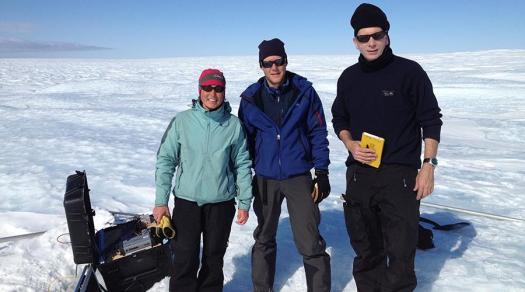Meet these 5 amazing women in STEM
What does it mean to be a young woman in STEM? For some of the Society for Science & the Public alumni, it might mean going out in the field to study glaciers. For others it might mean encouraging other young girls to code or enter computer science. It means being an Olympic athlete and biology professor. It means having the power to change the world.
Below, read stories about incredible women in STEM.

PHOTO COURTESY OF SARA KORNFELD SIMPSON.
Neuroscience and music are more related than you think
Sometimes, science and art converge in beautiful ways. Sara Kornfeld Simpson (Intel ISEF 2011-2012, Intel STS 2014) is double majoring in neuroscience and music at Boston University. She has played the flute for 11 years and the oboe for nine. Sara performed at the Society’s Signature Alumni Event in New York in September. She’s interested in research about the mechanisms by which the brain modulates neural signals and the way these neuromodulatory mechanisms faciliate behaviors like learning and memory. “There’s absolutely a connection between science and art, on many levels!” she said. “Both my scientific and artistic endeavors stimulate and excite my intellect, require discipline, problem-solving, and creativity, and are critical to my identity.”

PHOTO COURTESY OF MARIA MICHTA.
Science keeps this Olympian’s mind sharp
Not only is Maria Michta-Coffey (Intel STS 2004) an Olympian race walker, she also has a Ph.D. in biomedical sciences. She’s the ultimate combo of scientist and athlete. Maria says science helps to keep her mind sharp, while race walking makes her more efficient in the lab. She’s been to the Olympics twice, has earned 34 National Titles, and owns several American Records. She raced for Team USA in May at the Pan American Cup in Lima, Peru. Her next goal is to qualify for the World Race Walking Team Championships this summer in London. Maria is an adjunct biology professor at Suffolk County Community College. She is passionate about science communication, and may focus on that in the future.

PHOTO COURTESY OF TWILA MOON.
Studying effects of climate change on glacial ice
Twila Moon (Intel ISEF 1996, 1998, and 1999) works at the National Snow & Ice Data Center and Cooperative Institute for Research in Environmental Studies at the University of Colorado. On a college study abroad trip to Nepal, she stood near a large valley glacier and heard the glacier melting, dripping, and ice shifting. “I thought it was the most interesting, magical thing,” she said. The work Twila does helps us to understand where the Earth is going to experience coastal flooding and how ocean circulation might change. She encourages those interested in STEM to pursue it because “there are all sorts of jobs in the world that didn’t exist 10 years ago, and 10 years from now, there will be even more interesting jobs.”

PHOTO COURTESY OF POOJA CHRANDRASHEKAR.
She founded a nonprofit in high school that’s now going global
Pooja Chandrashekar (Intel STS 2015) knows a thing or two about starting a nonprofit as a teenager. At 15, she founded ProjectCSGirls, a nonprofit that promotes computer science among young girls. Four years later, what started as a regional competition in Virginia, Washington, D.C., and Maryland has grown into a national computer science competition for middle school girls. The organization also offers workshops overseas, including in India, Sri Lanka, Germany, and France. “This has always been an aspiration of mine, to build an international community,” Pooja said.
The busiest middle school student
Eleanor Sigrest (Broadcom MASTERS 2016) wants to be the first person on Mars. She’s particularly interested in the intersection of computers, engineering, and space. “It gets me excited just talking about it!” she said. Recently featured on the Today Show, Eleanor focuses her research on improving rocket nozzles and engineering. In her free time, she enjoys participating in science fairs. Recently, she led a booth for kids at the World Science Festival and spoke at a middle school for Introduce a Girl to Engineering Day.


